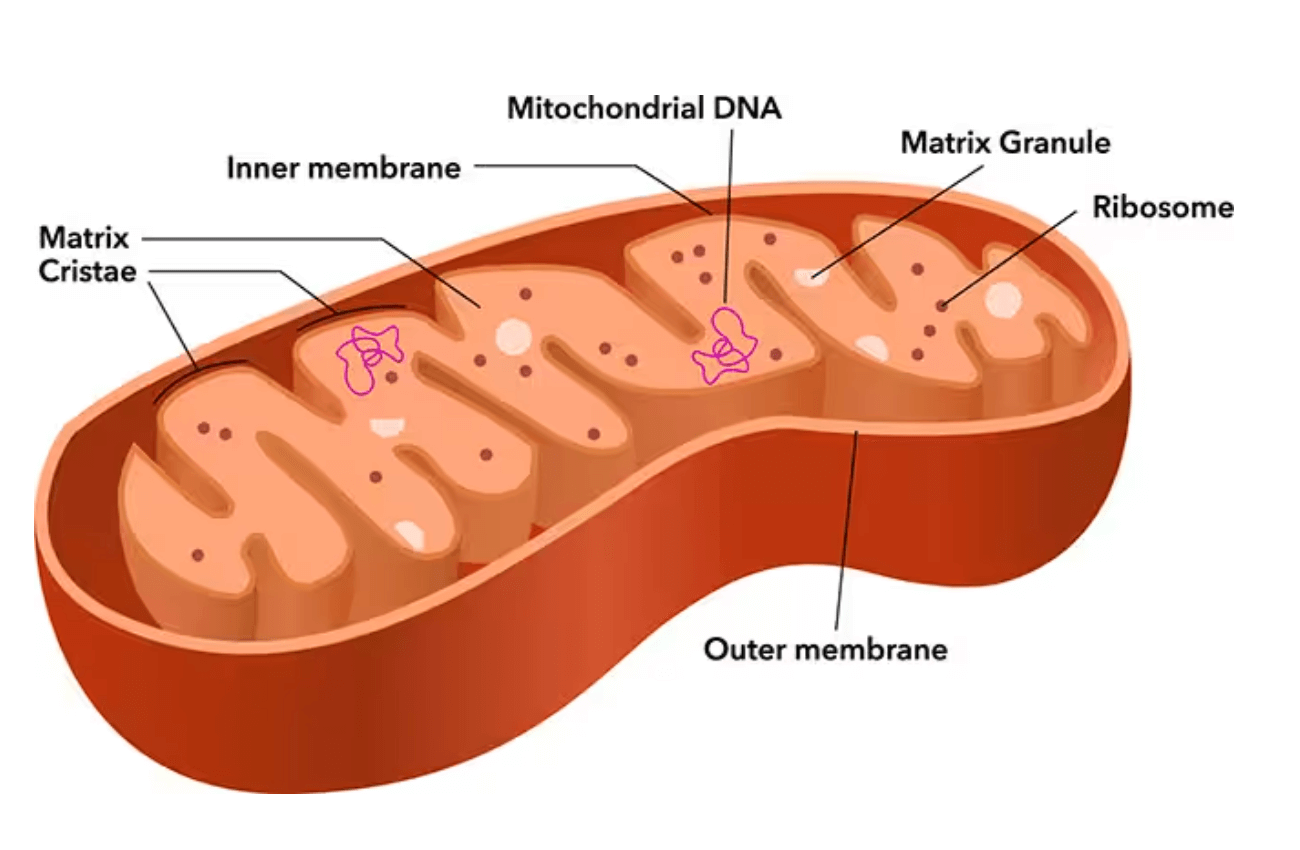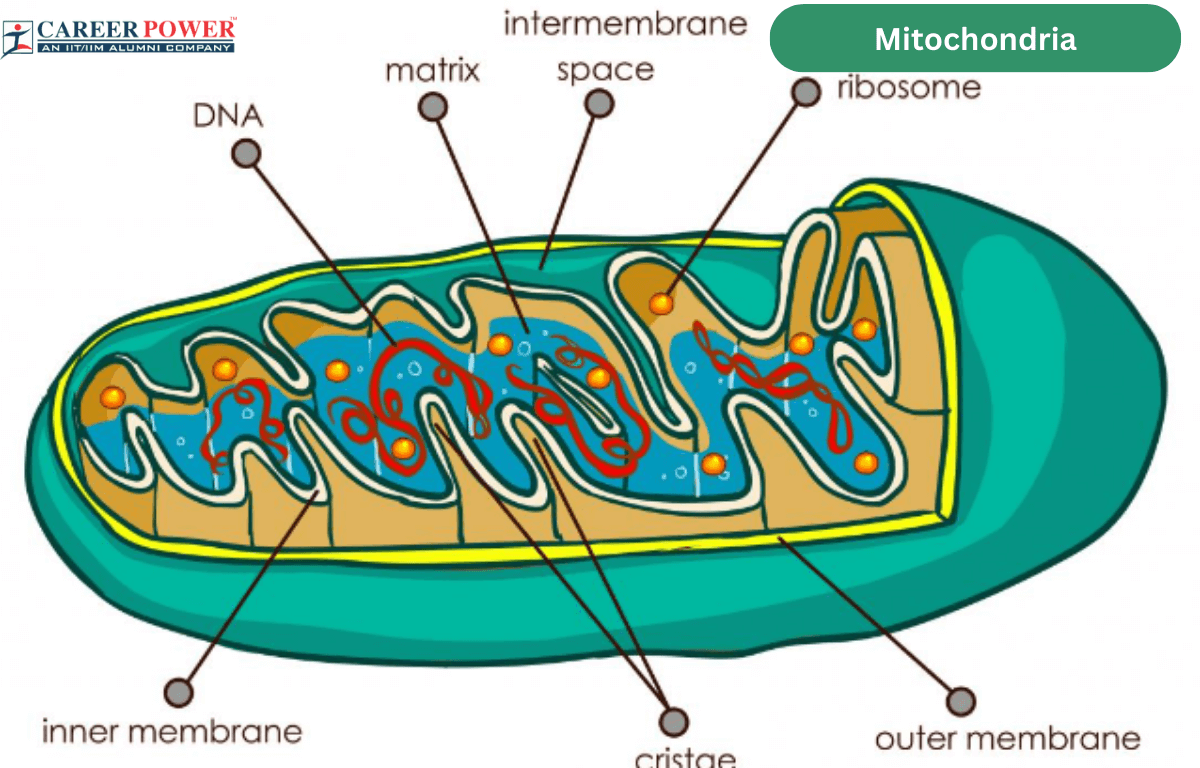Cell is one of the most important topics of the chapter called “The Fundamental Unit of Life: Cell” from class 9th Biology section. As it not only plays an important role in class 9th but is also important for further classes too. A cell is the basic structural and functional unit of all living organisms. The cell is the smallest entity that can independently carry out several processes necessary for life, such as metabolism, reproduction, and responding to the environment. Cells can vary in size, shape, and function, but they all share certain components like a cell membrane, cytoplasm, and genetic material (DNA).
The cell also consists of several cell organelles, in which each cell organelle has its own important role in the proper functioning of the cell. Some of the cell organelles are Endoplasmic reticulum, Mitochondria, Ribosomes, Lysosomes, Vacuoles, etc. In this article, we will be discussing one of them briefly i.e., the Mitochondria. Hope our article will help you to understand Mitochondria easily.
Mitochondria Definition
The mitochondria are double membranous organelles found in both Plant cell and Animal cell. The mitochondria are often referred to as the “Power House of the Cell” as they generate energy in the form of Adenosine Triphosphate (ATP) with the help of cellular respiration. This energy production occurs in the inner mitochondrial membrane.
Mitochondria takes place through the electron transport chain and oxidative phosphorylation. The mitochondria also play a very important role in other cellular functions, such as regulating cell death and controlling calcium levels in the cell.
Mitochondria Diagram
As we all know that the mitochondria are the cell organelles that are responsible for the production of energy in the form of ATB through cellular respiration. They have a double membrane and contain their own DNA. The well-labeled diagram of the mitochondria is mentioned below:

Mitochondria Structure
The mitochondria have a double membrane structure. The outer membrane of mitochondria covers the organelles, while the inner membrane is folded into structures called Cristae. These cristae increase the surface area of the mitochondria, allowing more space for the chemical reactions involved in energy production. The space within the inner membrane is known as the intermembrane space. Inside the inner membrane of the mitochondria, there is a metric that contains enzymes that are responsible for energy production.
The mitochondria also contain their own genetic material, called mitochondrial DNA. The mitochondrial is known as the “Power House” of the cell due to its role in the production of energy. The overall complex mitochondrial structure supports its vital role in generating energy for the cell.
Parts of Mitochondria
The mitochondria consist of several parts, including the outer mitochondrial membrane, the inner mitochondrial membrane, the intermembrane space, the metric, and the cristae (folding of the inner membrane). These components play crucial roles in energy production, cellular respiration, and various metabolic processes within the cell.
- Outer Mitochondrial membrane: This is the outermost layer of the mitochondria, which is composed of a phospholipid bilayer. It contains various transport proteins that allow the passage of ions, metabolites, and other molecules between the cytoplasm and the intermembrane space.
- Intermembrane Space: This is the region between the outer and inner mitochondrial membranes. The intermembrane space contains proteins involved in various processes, such as lipid metabolism and apoptosis.
- Inner Mitochondrial membrane: The inner membrane of the mitochondria is highly folded into structures called Cristae. These folds increase the surface area available for biochemical reactions. The inner membrane contains protein complexes of the electron transport chain and ATP synthesis, which play a crucial role in the production of energy.
- Cristae: The cristae are the folded structures of the inner mitochondrial membrane that house the electrons transport chain complexes and ATP synthesis. Cristae greatly enhance the surface area for electron transport and oxidative phosphorylation.
- Matrix: The innermost part of the mitochondria is generally known as the matrix. It contains several enzymes that are involved in the citric acid cycle (Krebs Cycle), fatty acid oxidation, and the replication and transportation of mitochondrial DNA.
- Mitochondrial DNA (mtDNA): The mitochondria have their own genetic material in the form of a circular DNA molecule. It encodes a small number of proteins and RNA molecules essential for mitochondrial functions.
- Ribosomes: Mitochondria have their ribosomes, which play a very important role in the synthesis of proteins that are produced by the mitochondrial DNA.
- Enzymes and Protein Complexes: The inner mitochondrial membrane consists of protein complexes responsible for the electron transport chain, which is a series of reactions that generate ATP. The complexes include NADH dehydrogenase, cytochrome c oxidase, and ATP synthesis.
Mitochondria Function
The mitochondria play several important functions in the proper maintenance of the cell. Some of them are discussed below:
- Energy Production: The primary function of the mitochondria is to produce energy in the form of ATP through cellular respiration.
- Oxidative Phosphorylation: Mitochondria are the sites of oxidative phosphorylation, a process in which electrons are transferred along the electron transport chain located in the inner mitochondrial membrane. This generates a proton gradient across the membrane, driving ATP synthesis.
- Metabolism: Mitochondria are involved in various metabolic pathways, including the citric acid cycle (Kreb cycle) that breaks down nutrients to produce electron chains and other intermediates used in biosynthesis.
- Calcium Regulation: Mitochondria help regulate calcium ion levels within the cell. They can take up and release calcium ions, playing a role in cellular signaling and maintaining proper calcium concentrations for various cellular processes.
- Apoptosis Regulation: Mitochondria are involved in controlling programmed cell death, or apoptosis. They release molecules like cytochrome c, which trigger a series of events leading to cell death when needed for cell maintenance or elimination.
- Heat production: Brown adipose tissue mitochondria possess a specialized protein known as the uncoupling protein that allows them to generate heat without producing ATP. This is particularly important for thermoregulation in animals.
- Lipid Metabolism: Mitochondria are also involved in lipid metabolism, including beta-oxidation of fatty acids and the synthesis of certain lipids.
- Cell Signaling: Mitochondria plays a role in cellular signaling pathways, affecting processes such as cell growth, differentiation, and response to stress.
- Amino Acid Metabolism: Some amino acids are metabolized within mitochondria, contributing to the generation of intermediates used in energy production or biosynthesis.
- Inheritance: In many organisms, mitochondria have their own DNA and are inherited exclusively from the maternal side. Mitochondrial DNA (mtDNA) encodes some of the proteins involved in energy production.



 50 Vegetables Name for Kids in English a...
50 Vegetables Name for Kids in English a...
 Food Chain: Definition, Types, Examples,...
Food Chain: Definition, Types, Examples,...
 Human Respiratory System: Definition, Di...
Human Respiratory System: Definition, Di...













